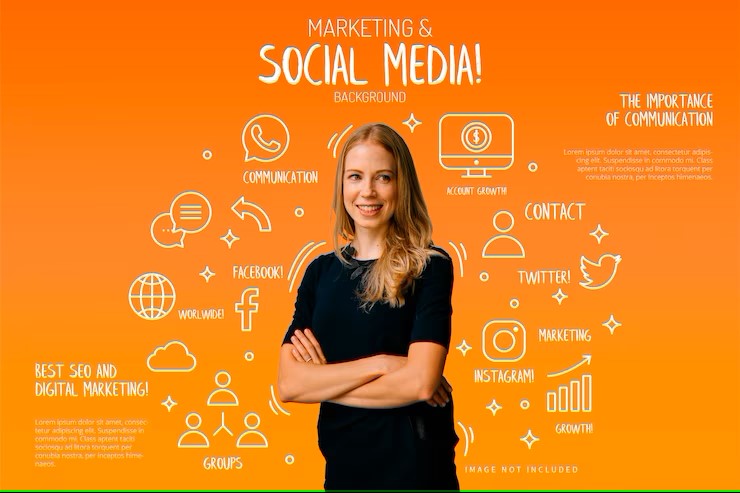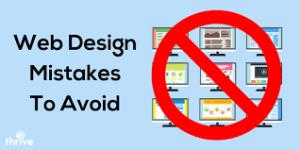Introduction
Are you a Nigerian entrepreneur navigating the dynamic landscape of business, with a brand that’s struggling to find its voice in the vast realm of social media? In a digital age dominated by conversations, having little to no social media presence can leave your Small and Medium-sized Enterprise (SME) missing out on critical opportunities for growth. The question is not just about being on social media but about strategically leveraging these platforms to build a brand that resonates with your audience.
Problem: With a limited social media presence, your brand might be missing out on valuable opportunities for engagement, visibility, and growth in the Nigerian market.
Agitate: The lack of a strong social media presence hinders your brand from connecting with the diverse and vibrant audience that actively participates in online conversations. In a landscape where digital engagement is the norm, your business might be falling behind.
Solution: This article serves as a comprehensive guide for Nigerian entrepreneurs looking to build a robust social media presence. By the end, you’ll not only understand the importance of Social Media Marketing (SMM) but also discover a compelling offer to help you manage your social media accounts professionally and convey your intended message effectively. Let’s embark on this transformative journey together.
The Social Media Landscape in Nigeria
Before delving into the intricacies of Social Media Marketing, let’s explore the landscape of social media in Nigeria. Understanding the platforms that matter and their significance can pave the way for a strategic approach to building your brand.

Image by Freepik
1. Facebook: The Social Hub
With over 30 million active users in Nigeria, Facebook remains a social hub for connecting with a diverse audience. It offers versatile options for businesses, from creating a business page to running targeted ads, making it an essential platform for Nigerian entrepreneurs.
2. Instagram: Visual Storytelling
Instagram, known for its visual-centric approach, is highly popular among the younger demographic. Leveraging captivating images and videos, businesses can showcase products or services in a visually appealing manner, fostering engagement and brand awareness.
3. Twitter: Real-Time Conversations
Twitter is the go-to platform for real-time conversations. It’s a space where Nigerian entrepreneurs can participate in industry discussions, share updates, and engage with a broader audience, including influencers and thought leaders.
4. LinkedIn: Professional Networking
For B2B businesses and professional services, LinkedIn is a goldmine. It’s a platform where Nigerian entrepreneurs can establish themselves as industry experts, connect with other professionals, and showcase their business achievements.
5. YouTube: Video Marketing
With the rise of video content, YouTube offers a powerful platform for Nigerian entrepreneurs to engage their audience through tutorials, product demonstrations, and brand stories. Video marketing on YouTube can boost brand visibility and credibility.
The Importance of Social Media Marketing (SMM)
Now that we’ve explored the social media landscape in Nigeria, let’s delve into why Social Media Marketing is not just a trend but a strategic necessity for Nigerian entrepreneurs.
1. Audience Engagement: A Two-Way Street
SMM is not a one-sided broadcast; it’s a conversation. Engaging with your audience on social media creates a sense of community around your brand. Responding to comments, asking questions, and actively participating in discussions humanizes your business and fosters meaningful connections.
2. Brand Visibility: Beyond Traditional Boundaries
While a traditional brick-and-mortar establishment might have limited reach, social media extends your brand’s visibility beyond physical boundaries. With millions of Nigerians actively using these platforms, SMM ensures your brand is part of their daily conversations, creating brand recall and increasing overall visibility.
3. Targeted Reach: Precision Marketing
SMM allows you to target specific demographics, interests, and behaviors. Rather than broadcasting your message to a broad audience, you can tailor your content to reach those who are most likely to be interested in your products or services. This precision marketing enhances the effectiveness of your campaigns.
4. Content Variety: A Multimedia Showcase
Social media platforms embrace diverse content formats, from images and videos to infographics and live streams. This variety allows you to showcase your brand in creative ways, making your content more shareable and engaging for your audience.
5. Real-Time Analytics: Informed Decision-Making
The data-driven nature of SMM is a game-changer. Real-time analytics provide insights into the performance of your campaigns, helping you understand what works and what needs adjustment. This constant feedback loop allows for informed decision-making and the ability to refine your strategies on the go.
The Struggle of Limited Social Media Presence
If your brand has little to no social media presence, you might be facing challenges that hinder your business’s potential. Let’s explore these struggles and understand how a strategic approach to SMM can transform your online presence.
1. Missed Opportunities for Engagement
With a limited social media presence, your brand might be missing out on valuable opportunities to engage with your audience. Social media is not just a platform for promotion; it’s a space for building relationships, receiving feedback, and addressing customer inquiries in real time.
2. Ineffective Brand Awareness
Building brand awareness is a gradual process, and social media plays a pivotal role in this journey. Without a strong presence on platforms like Facebook, Instagram, Twitter, LinkedIn, and YouTube, your brand may struggle to create the necessary buzz and recognition among your target audience.
3. Difficulty in Conveying Message Effectively
Social media platforms provide a dynamic canvas for storytelling. With limited presence, you might find it challenging to convey your brand’s message effectively. SMM allows you to share your brand story, values, and offerings in a visually appealing and engaging manner.
The Transformative Power of Social Media Marketing
As we’ve identified the struggles of limited social media presence, it’s essential to recognize the transformative power of Social Media Marketing. Let’s explore how SMM can revolutionize your brand’s online presence.
1. Creating an Engaging Narrative
SMM allows you to craft an engaging narrative for your brand. Through carefully curated content, captivating visuals, and strategic messaging, you can tell your brand story in a way that resonates with your audience, fostering connection and loyalty.
2. Building a Community Around Your Brand
Social media platforms provide an opportunity to build a community around your brand. Actively engaging with your audience, responding to comments, and encouraging user-generated content can turn your followers into brand advocates, contributing to a positive and dynamic brand community.
3. Increasing Brand Visibility and Recognition
A robust social media presence ensures your brand is consistently visible to your target audience. Regular posts, engaging content, and strategic use of hashtags contribute to increased brand recognition, making your business a familiar name in the digital space.
4. Leveraging Paid Advertising for Maximum Impact
While organic growth is valuable, paid advertising on social media platforms can catapult your brand into the spotlight. With targeted ads, you can reach specific demographics, amplify your message, and drive engagement with a tailored audience.
5. Nurturing Customer Relationships
SMM enables you to nurture relationships with your customers. Responding to inquiries, addressing concerns, and showcasing your commitment to customer satisfaction in real time can build trust and loyalty, fostering long-term relationships.

Image by BiZkettE1 on Freepik
The Outdated Website Challenge: SMM as a Solution
As you grapple with the challenge of outdated websites, SMM emerges as a potent solution. Here’s how Social Media Marketing can breathe new life into your brand’s online presence.
1. Compensating for Website Limitations
An outdated website may lack the functionality and visual appeal needed to capture audience attention. Social media platforms provide a dynamic alternative, allowing you to share content, engage with your audience, and redirect them to your website for more detailed information.
2. Expanding Your Digital Footprint
While a website is a static entity, social media expands your digital footprint. By actively participating in conversations, sharing valuable content, and leveraging the visual appeal of platforms like Instagram, you can reach a broader audience and direct them to your business.
3. Fostering Brand Loyalty
SMM is not just about acquiring new customers; it’s about fostering brand loyalty. Engaging with your audience on social media builds a community around your brand, creating a sense of belonging that goes beyond the transactional relationship.
4. Enhancing Customer Service
Social media provides a direct line of communication between your brand and your customers. Responding to queries, addressing concerns, and showcasing your commitment to customer satisfaction can be done in real time, strengthening your brand’s reputation.
Ready to manage your social media accounts professionally and build a powerful brand presence? Our team specializes in SMM for Nigerian entrepreneurs. Contact us to discuss how we can help you navigate the social media landscape and convey your intended message effectively.
Crafting a Professional Social Media Presence
To unlock the full potential of Social Media Marketing, it’s crucial to approach it with professionalism and strategic intent. Here are key steps to professionally manage your social media accounts and elevate your brand presence.
1. Strategic Planning:
Before diving into social media, develop a strategic plan. Define your goals, target audience, and key messages. This plan will serve as a roadmap for your SMM journey.
2. Platform Selection:
Identify the platforms that align with your target audience. For example, if your business caters to a professional audience, LinkedIn might be more effective than platforms focused on visual content like Instagram.
3. Consistent Branding:
Maintain consistent branding across all social media platforms. Use the same logo, color palette, and tone of voice to create a cohesive brand identity that resonates with your audience.
4. Quality Content Creation:
Invest in quality content creation. Whether it’s compelling visuals, informative blog posts, or engaging videos, high-quality content is essential for capturing and retaining audience attention.
5. Strategic Posting Schedule:
Consistency is key in SMM. Develop a strategic posting schedule that aligns with your audience’s online behavior. Experiment with posting times to identify when your content receives the most engagement.
6. Audience Engagement:
Social media is a two-way street. Actively engage with your audience by responding to comments, asking questions, and participating in relevant conversations. Building a relationship with your audience fosters brand loyalty.
7. Paid Advertising:
Consider incorporating paid advertising into your SMM strategy. Platforms like Facebook and Instagram offer robust advertising options that allow you to target specific demographics and maximize the impact of your campaigns.
8. Analytics and Optimization:
Regularly analyze the performance of your social media campaigns using platform analytics. Use the data to identify trends, understand what resonates with your audience, and optimize your strategy for better results.
Conclusion
In the ever-evolving landscape of Nigerian entrepreneurship, building a robust social media presence is not just a trend; it’s a strategic imperative. As you navigate the challenges of limited social media presence, Social Media Marketing emerges as a transformative solution, bridging the gap between your brand and the dynamic conversations happening online.
Don’t let a lack of social media presence hinder your brand’s potential. Reach out to us today to discuss how we can help you professionally manage your social media accounts, navigate the social media landscape, and convey your intended message effectively. Your journey to building a compelling brand presence on platforms that matter begins here.







